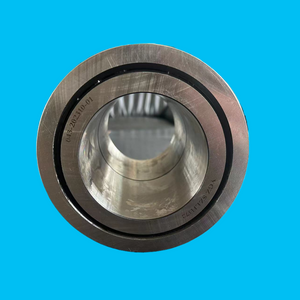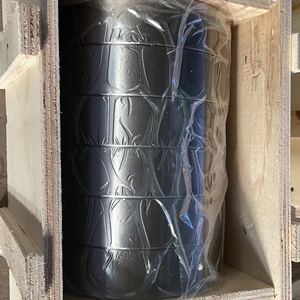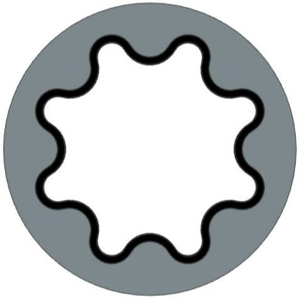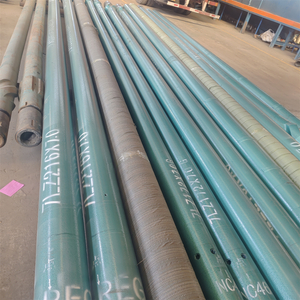In the oil and gas industry, downhole drilling motors play a crucial role in directional and horizontal drilling operations. These motors provide the necessary torque and rotation to the drill bit, allowing for precise wellbore navigation. With the increasing complexity of drilling operations, the demand for high-performance downhole drilling motors has grown significantly.
This article explores the fundamentals of downhole drilling, the working principles of a downhole drilling motor, its key components, and its advantages over conventional rotary drilling methods. By the end of this article, you'll have a comprehensive understanding of how these motors operate, their benefits, and their role in modern drilling techniques.
What is Downhole Drilling?
Downhole drilling refers to the process of drilling a wellbore into the earth's subsurface to extract oil, gas, or other resources. Unlike traditional vertical drilling, downhole drilling often involves advanced techniques such as directional drilling, horizontal drilling, and extended-reach drilling (ERD) to access reservoirs that are not directly beneath the drilling rig.
Types of Downhole Drilling
Vertical Drilling – The simplest form, where the wellbore is drilled straight down.
Directional Drilling – Allows the wellbore to deviate from the vertical path to reach a specific target.
Horizontal Drilling – The wellbore is turned horizontally within the reservoir to maximize contact with the producing formation.
Multilateral Drilling – Multiple wellbores branch out from a single main well, increasing reservoir access.
In modern drilling operations, downhole drilling motors are essential for achieving precise wellbore placement, particularly in directional and horizontal drilling applications.
What is a Downhole Drilling Motor?
A downhole drilling motor, also known as a mud motor, is a positive displacement motor (PDM) used in drilling operations to provide rotational power to the drill bit. This tool is positioned in the bottom hole assembly (BHA) and is powered by the flow of drilling fluid (mud).
Working Principle of a Downhole Drilling Motor
The basic working principle of a downhole drilling motor is as follows:
Drilling fluid (mud) flows through the motor, creating hydraulic energy.
This energy is converted into mechanical rotation through the motor's internal components.
The rotor and stator inside the motor generate a rotational force.
This force is transmitted to the drill bit via the cardan shaft and transmission shaft.
This system allows the drill bit to rotate independently of the drill string, making it highly effective for directional drilling and horizontal drilling.
Advantages of Using a Downhole Drilling Motor
Enhances Drilling Efficiency – Provides additional rotary power, reducing the need for surface-driven rotation.
Enables Directional Drilling – Allows for better wellbore navigation with precise control.
Reduces Wear on Drill String – Minimizes torsional stress on the drill pipe.
Improves Drilling Speed – Enhances rate of penetration (ROP) by providing continuous rotation.
Components of a Downhole Motor
A downhole drilling motor consists of several key components, each playing a crucial role in its operation. Below are the main parts of a downhole drilling motor and their functions.
Dump Assembly Section
The dump assembly section is responsible for managing the drilling fluid flow within the motor. It ensures smooth circulation of drilling mud, which is essential for cooling and lubricating the motor while transmitting hydraulic power.
Key Functions:
Controls the entry and exit of drilling fluid.
Prevents excessive pressure buildup.
Ensures efficient motor performance.
Motor
The motor is the heart of the downhole drilling motor and consists of a rotor and a stator. The interaction between these components generates the rotational motion needed to drive the drill bit.
This positive displacement motor (PDM) design allows for efficient energy conversion from hydraulic power to mechanical rotation.
Cardan Shaft
The cardan shaft is an essential component that connects the motor to the transmission shaft. It helps in transferring rotational motion while compensating for misalignment between the rotor and the output shaft.
Key Features:
Allows for smooth torque transmission.
Reduces mechanical stress on other motor components.
Improves overall motor durability.
Transmission Shaft
The transmission shaft is the final link that transfers torque from the cardan shaft to the drill bit. This shaft ensures that the rotational force generated by the downhole drilling motor is effectively delivered to the bottom of the wellbore.
Key Functions:
Directly drives the drill bit rotation.
Ensures stable torque transfer.
Enhances drilling precision.
Comparison of Downhole Drilling Motors
Different types of downhole drilling motors are used based on drilling conditions and performance requirements. Below is a comparison of rotary drilling vs. mud motor drilling:
| Feature | Rotary Drilling | Downhole Drilling Motor |
| Power Source | Surface-driven rotation | Hydraulic energy from drilling mud |
| Directional Control | Limited | Excellent |
| Torque Output | Lower | Higher |
| Wear on Drill String | High | Reduced |
| Rate of Penetration (ROP) | Moderate | High |
| Suitability for Hard Formations | Less effective | More effective |
From the table above, it's clear that downhole drilling motors offer significant advantages, particularly in directional drilling and horizontal drilling applications.
Conclusion
A downhole drilling motor is an essential tool in modern drilling operations, particularly for directional and horizontal drilling. By utilizing drilling fluid (mud) to generate rotational motion, these motors enhance drilling efficiency, improve wellbore precision, and reduce mechanical stress on the drill string.
With advancements in mud motor technology, drillers can now achieve greater wellbore accuracy, increased rate of penetration (ROP), and improved overall drilling performance. As the oil and gas industry continues to evolve, the role of downhole drilling motors will only become more critical.
FAQs
1. What is the primary function of a downhole drilling motor?
A downhole drilling motor converts hydraulic energy from drilling fluid into mechanical rotation to drive the drill bit, allowing for efficient directional drilling and horizontal drilling.
2. How does a downhole drilling motor improve drilling efficiency?
By providing additional rotary power, a downhole drilling motor increases the rate of penetration (ROP), reduces wear on the drill string, and allows for precise wellbore navigation.
3. What are the key components of a downhole drilling motor?
A downhole drilling motor consists of a dump assembly section, motor (rotor and stator), cardan shaft, and transmission shaft.
4. What are the benefits of using a downhole drilling motor over traditional rotary drilling?
5. Can a downhole drilling motor be used in all types of drilling?
While downhole drilling motors are ideal for directional and horizontal drilling, they may not be necessary for simple vertical drilling operations.




















